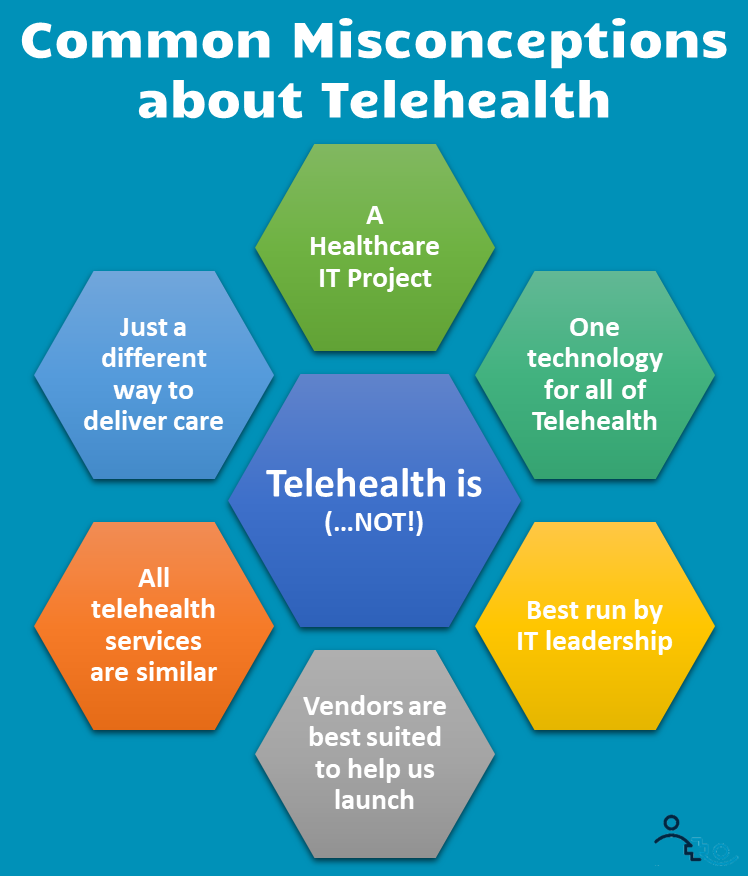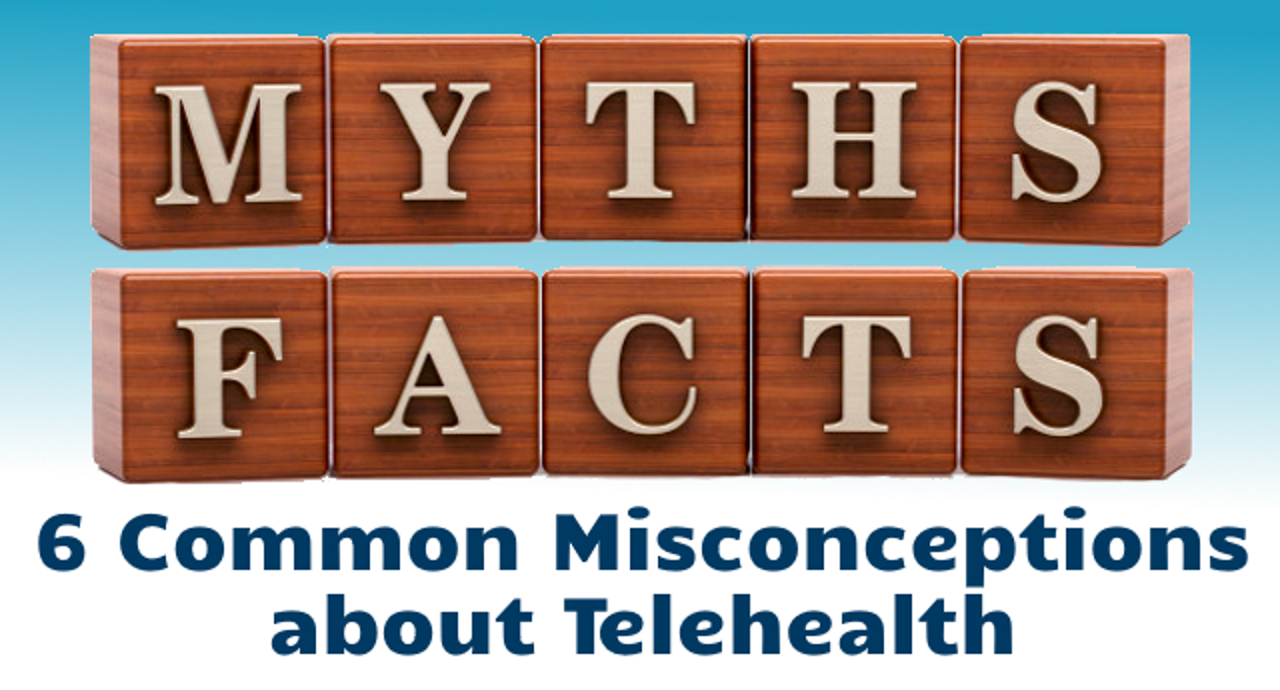Over the 10 years that I’ve been working with health systems on telehealth strategy, service design and implementation I’ve come across a number of misconceptions that people hold about telehealth. With telehealth now taking hold as a valid alternative care delivery tool, these misconceptions may actually be part of the reason why many telehealth implementations fall short of expectations and what should be possible.
My goal with this overview is to raise awareness and bring clarification, so you can structure the launch or optimization of your telehealth services more successfully. As readers of my article and past clients know, I’m very fond of Don Berwick’s often-used quote that “Every system is perfectly designed, to get the results it gets”. Misconceptions are part of such a system, though people are often not consciously aware. They are oftentimes beliefs that were formed based on a first impression and sometimes prejudices that people have adopted without questioning them.



- Telehealth is a Healthcare IT Acquisition and Deployment Project
- There is one technology solution for telehealth that everyone will use.
- Our IT staff is best suited to run our telehealth program.
- Telehealth Vendors will help us to properly set up our telemedicine services.
- Once we’ve established one telehealth service, we can quickly roll it out to others.
- Telehealth is just a different way to deliver care.
Misconceptions: Myths and Reality
In the following sections, I’ll first introduce each misconception and provide a description of the actual reality. The links to other Telehealth Tuesday articles provide more guidance and pragmatic solutions to launch and optimize telehealth services successfully.
Misconception #1: Telehealth is a Healthcare IT Acquisition and Deployment Project
Reality: Telehealth is the design, development and launch of new clinical service offerings. (that includes the acquisition and deployment of technology). The emphasis here is on clinical, which dictates that a telehealth service should be designed, implemented and managed with clinical input.
More information: Launching Telehealth is Not a Health IT Project
Misconception #2: There is one technology solution for telehealth that everyone will use.
Reality: Telehealth encompasses a number of different modalities including interactive patient care (telephonic, live audio/video, asynchronous texting), remote physiological monitoring, store & forward diagnosis, TeleEducation plus all the various features accessible through the Patient Portal, such as reviewing lab results, clinical notes, immunization records or scheduling appointments. Thus telehealth is first off not limited to just video chat but even within “live audio/video telemedicine” different scenarios and different medical specialties require different technical solutions.
More information: Telehealth Requires Multiple Technology Solutions
Misconception #3: Our IT staff is best suited to run our telehealth program.
Reality: Technology contributes only 10% to the successful creation of a telehealth service. The other 90% are workflow and organizational change management. What is needed is a multidisciplinary team effort that involves clinical leadership as well as executive, operational and technical support.
More information: Should your IT Staff run your Telehealth Program?
Misconception #4: Telehealth Vendors will help us to properly set up our telemedicine services.
Reality: Great telehealth vendors are involved in ensuring the proper configuration and training of users. They are not positioned to define workflows, policies, billing, licensing, etc. That role must be fulfilled by internal staff or telehealth implementation experts (such as Ingenium).
More information: 5 Things your Telehealth Vendor cannot do for you
Misconception #5: Once we’ve established one telehealth service, we can quickly roll out others.
Reality: One swallow does not a summer make. If you’ve established one telehealth service, you’ve established one telehealth service. There are dozens if not hundreds of different services (see Misconception #3) and even between specialties there are significant differences in workflow and coordination that every new telemedicine service offering needs to be treated as a new project.
More information: All Telehealth Services are Similar to Each Other
Misconception #6: Telehealth is just a different way to deliver care.
Reality: Telehealth is quickly becoming the way to deliver care. After a quick rush to telehealth during the Covid-19 health crisis, demand slowed down again, but soon, due to innovative competitors, demand and utilization will rise again. Leading healthcare organizations are even beginning to use it strategically to drive and meet their strategic objectives.
More information: Telehealth is just a different way to deliver care.
The Essence of Telehealth
In essence Telehealth is a clinical service to deliver care and practice medicine at a distance. When you want to launch or optimize a telehealth service, that mindset will protect you from most of the misconceptions above.
What misconceptions have you or your organization held that you overcame or revised?








To receive articles like these in your Inbox every week, you can subscribe to Christian’s Telehealth Tuesday Newsletter.
Christian Milaster and his team optimize Telehealth Services for health systems and physician practices. Christian is the Founder and President of Ingenium Digital Health Advisors where he and his expert consortium partner with healthcare leaders to enable the delivery of extraordinary care.
Contact Christian by phone or text at 657-464-3648, via email, or video chat.







Leave A Comment